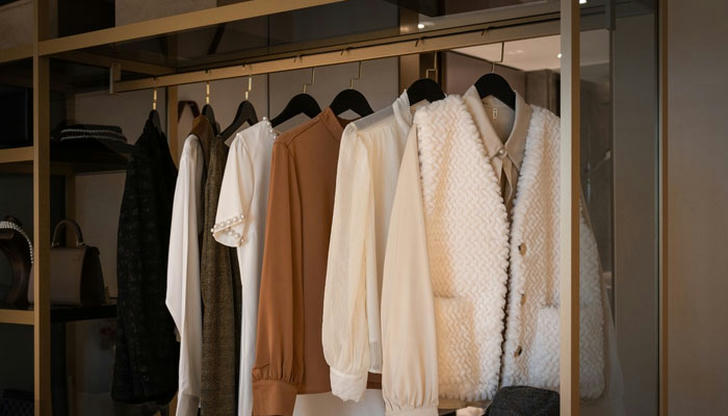Living More With Less: A Practical Guide to Minimalist Living
In a world overflowing with options, notifications, and possessions, the concept of minimalist living offers a refreshing counterbalance. It's not about empty rooms or deprivation—it's about freedom, clarity, and living a more intentional, fulfilling life.
🔴 Minimalism isn’t about owning nothing. It’s about making room for what truly matters.

What Is Minimalist Living?
Minimalist living is a lifestyle centered on simplifying your surroundings, your commitments, and your mindset. It encourages you to let go of excess and focus on what adds real value.
Minimalism spans more than just decluttering—it’s about:
- Prioritizing quality over quantity
- Living intentionally, not reactively
- Creating space—physically and mentally
Whether you live in New York, Toronto, Melbourne, or London, minimalist principles can fit any lifestyle.
Why Embrace a Minimalist Lifestyle?
Adopting a minimalist mindset can bring powerful benefits:
| Benefit | Impact |
|---|---|
| Less Stress | A decluttered space leads to a decluttered mind |
| More Time & Energy | Less to clean, organize, maintain |
| Financial Freedom | Conscious spending helps you save more |
| Improved Focus | Fewer distractions = increased productivity |
| Environmental Impact | Consuming less means producing less waste |
🔴 Every item you own takes your time, energy, and attention. Own only what serves you.
How to Start Minimalist Living: Step-by-Step Guide 🚪✨
Start With One Room
Pick a space you spend a lot of time in—your bedroom, kitchen, or office.
- Remove items you haven’t used in the last 6–12 months
- Ask yourself: Does this item serve a purpose?
- Donate, sell, or recycle unused belongings
Embrace the 80/20 Rule
We use 20% of our stuff 80% of the time. Let go of the unused 80%.
- Limit your wardrobe to essentials
- Reduce duplicate items (how many mugs do you really need?)
- Streamline tech gadgets and wires
Simplify Your Schedule
Minimalism isn’t just about stuff—it’s about time.
- Learn to say no to non-essential commitments
- Block out quiet time in your day
- Focus on activities that energize you
Minimalism and Mental Health 🧠💬
A simplified lifestyle creates mental space for clarity and calm.
- Fewer possessions = less decision fatigue
- A clean environment reduces cognitive overload
- Minimalist spaces foster mindfulness and intentional living
Studies show that cluttered environments can increase cortisol levels (the stress hormone), especially in women. Simplifying your space supports emotional wellness.
Digital Minimalism: Reclaiming Focus in a Noisy World 📵💻
Minimalism applies to digital spaces too:
- Unsubscribe from email lists you don’t read
- Remove apps you rarely use
- Limit screen time with tools like Focus Mode
- Organize your desktop and folders regularly
Your attention is your most valuable asset. 🔴 Don’t let your phone steal it.
Minimalist Wardrobe: Capsule Closet Basics 👕👖
A capsule wardrobe is a curated collection of versatile clothing that you love and wear often.
Start with:
- 5–7 tops
- 3–4 bottoms
- 2–3 shoes
- 1–2 jackets
- Minimal accessories
Tips:
- Choose neutral colors and classic styles
- Buy quality over quantity
- Donate clothes you haven’t worn in the last year
This not only saves time in the morning—it also reduces decision fatigue and supports sustainable fashion.
Real-Life Examples from Around the World 🌍
Mia, 33, from Toronto, Canada:
“After downsizing from a 3-bedroom home to a one-bedroom condo, I finally had the freedom to travel more and spend time with loved ones. I don’t miss the clutter at all.”
Daniel, 45, from Melbourne, Australia:
“Switching to a minimalist lifestyle helped me pay off debt and launch my own business. I learned that I had enough all along—I just didn’t need more.”
Ellie, 29, from Manchester, UK:
“Decluttering my digital life gave me back my evenings. Now I read, cook, and journal. My anxiety levels have dropped dramatically.”
Minimalist Home Design Tips 🛋️
Create calming, clutter-free spaces:
- Use neutral color palettes (white, beige, grey)
- Choose multi-functional furniture (sofa beds, storage ottomans)
- Add plants for natural beauty and air purification
- Let in natural light whenever possible
- Keep surfaces clean and clear
🔴 Your home should be a sanctuary, not a storage unit.
Making It Personal: Your Own Version of Minimalism
Minimalism isn’t one-size-fits-all. You define what “less” means for you.
Ask yourself:
- What do I truly value?
- What brings me joy vs. stress?
- What do I want more space for—physically and emotionally?
There’s no need to live with only 50 items or give up your favorite hobby gear. If something supports your lifestyle and happiness, it belongs.
Common Myths About Minimalism 🚫
| Myth | Reality |
|---|---|
| “It’s boring or sterile” | Minimalist homes can be warm and personalized |
| “It’s only for single people” | Families and couples benefit from simplifying too |
| “You have to throw everything out” | It’s about intention, not deprivation |
Minimalism isn’t about restriction—it’s about liberation.
Conclusion: Less Is Truly More ✨
Minimalist living isn’t about sacrifice. It’s about freedom from chaos, freedom from comparison, and freedom to focus on what really matters—your passions, relationships, health, and happiness.
Whether you're decluttering a drawer or redesigning your life, every small step toward simplicity opens space for joy. And in that space, you’ll discover what it means to truly live well.
🔴 Minimalism helps you live with purpose, not just possessions.
